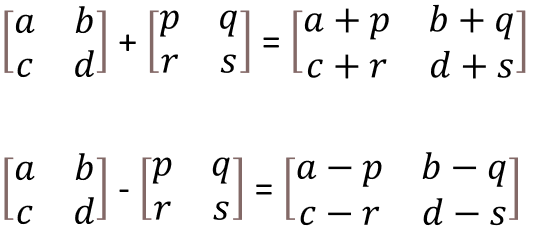Basics of Matrix
What is Matrix?
Matrix is a two-dimensional array of numbers. In it numbers are arranged in rows and columns, and they are enclosed by a square bracket, i.e. by [ ].
For example,
Rows and Columns of a Matrix
The rows are horizontal, i.e. numbers written left to right.
The columns are vertical, i.e. numbers written from top to bottom.
For example, in the matrix A =
- the two horizontal rows are: (1, 2, 3) and (4, 5, 6)
- the three vertical columns are: (1, 4), (2, 5) and (3, 6)
So, the above matrix is a 2 × 3 matrix (row × column).
Denoting an element of a Matrix
While we use capital letters to denote matrices, we use small letters to denote their elements. An element in a matrix can be denoted using row and column numbers in the subscript. The row number is written first, followed by the column number.
For example, in the above matrix A,
Similarly,
Properties of Matrices
Addition and Subtraction of Matrices
Two matrices having the same rows and columns can be added or subtracted.

For example:
Multiplication of Matrices
We may encounter two types of multiplications when matrices are involved.
Scalar multiplication
We can multiply a matrix by a constant (called scalar).

For example,
3 ×
Multiplication of two Matrices
We can also multiply two metrices, say A × B. We will study this in more detail in a separate article.
We cannot divide two matrices in a traditional way. Rather we multiply one matrix with the inverse of the other matrix.
For example, if we have to find out A/B, then we will do it this way:
A/B = A × (1/B) = A ×
Where
Transposing a Matrix
To transpose a matrix, we just swap the rows and columns.
For example, if we have a matrix A =
Transpose of matrix A,